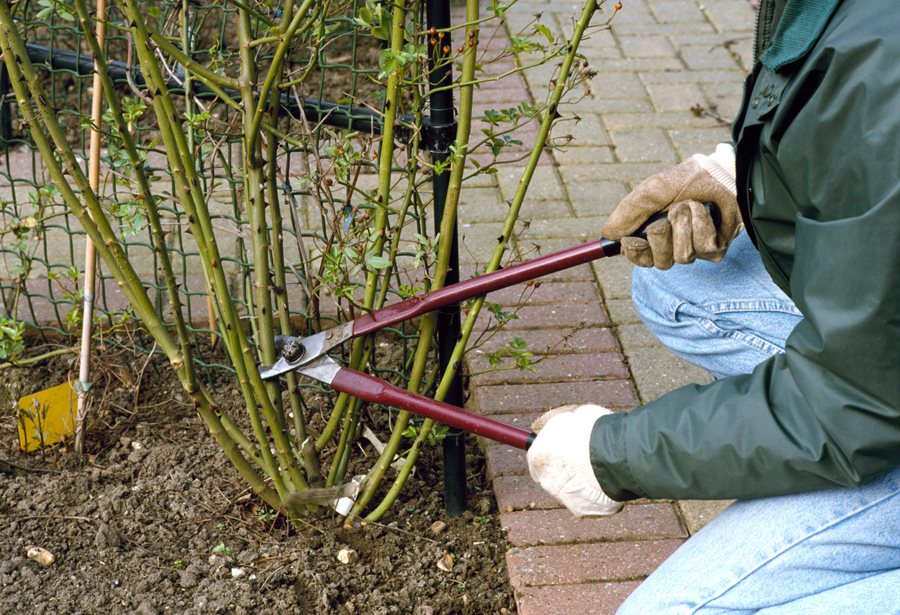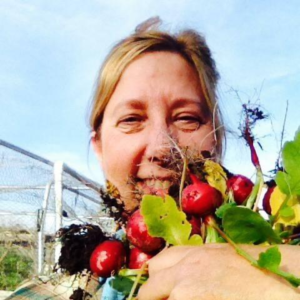Roses in California do not need to be pruned severely like in colder climates. Roses should be lightly pruned while deadheading to encourage fall bloom.

By Sharon McCray
 This is my first column in this paper, so I thought I should tell you a little bit about me. I was educated by the University of California Cooperative Extension as a Master Gardener in 1992 and have remained certified ever since. I established the Home Composting Program in 1994 and became a California Master Naturalist in 2015. I continue to teach horticulture classes and volunteer at Emma Prusch Farm Park in San Jose.
This is my first column in this paper, so I thought I should tell you a little bit about me. I was educated by the University of California Cooperative Extension as a Master Gardener in 1992 and have remained certified ever since. I established the Home Composting Program in 1994 and became a California Master Naturalist in 2015. I continue to teach horticulture classes and volunteer at Emma Prusch Farm Park in San Jose.
Now let’s get started. First, take an inventory. What is happening in your garden? Here are some simple yet practical ways to get your garden ready to survive winter in California — whatever that brings. Listen to the season … keep watering until you smell the rain.
If you’ve never kept a garden journal I encourage you to consider starting one. Noting what worked, what summer vegetables and flowers your family enjoyed and which plants did not succeed so you know what to plant next year. If you save heirloom seeds, be sure to indicate the variety and date collected on the paper envelope you store them in: I always think I will remember, but I seldom do. When cleaning up it is important to remember that many fungal diseases hide during winter in decaying garden material. Put leaves in the compost pile and keep the lawn and garden beds clear of debris including weeds. Diseased plant material, especially fire blight, and rotten fruit, belong in the trash.
 Fertilizers containing higher percentages of phosphorus and potash can help plants recover faster from freezes. It is a good idea not to fertilize after Nov. 1 as fertilizers encourage new growth that may not survive a frost or hungry pests. Unfertilized lawn clippings are a good mulch and source of nitrogen.
Fertilizers containing higher percentages of phosphorus and potash can help plants recover faster from freezes. It is a good idea not to fertilize after Nov. 1 as fertilizers encourage new growth that may not survive a frost or hungry pests. Unfertilized lawn clippings are a good mulch and source of nitrogen.
The importance of fresh mulch cannot be overstated. Use mulch to control weeds, preserve moisture and provide a barrier for certain diseases such as peach leaf curl. Many common diseases reside in the soil until the spring rains arrive when the spores are splashed onto your new plant growth. Cleaning up under the trees is a good way to prevent peach leaf curl.
Fruit for next year’s crop was determined shortly after this year’s harvest. In summer prune your trees for shape and size. Winter prune for fruit production. Remove any dried fruits from fruit and nut trees. Fertilize pears and plums. Trees are taking up nutrients now and water is critical.
Roses in California do not need to be pruned severely like in colder climates. Roses should be lightly pruned while deadheading to encourage fall bloom. About eight weeks from deadheading, new flowers will bloom, weather permitting. There is no need to fertilize roses now as they need to rest.
 Seed winter vegetable crops in pots now including lettuce, beets, onions, broccoli and cauliflower. They should be ready to put into the ground in about six weeks. Carrots are best planted directly in the ground and need to be kept moist until the tops are at least two inches above the soil level. Including radish seeds with your carrot seeds will eliminate the need to thin the carrots later on.
Seed winter vegetable crops in pots now including lettuce, beets, onions, broccoli and cauliflower. They should be ready to put into the ground in about six weeks. Carrots are best planted directly in the ground and need to be kept moist until the tops are at least two inches above the soil level. Including radish seeds with your carrot seeds will eliminate the need to thin the carrots later on.
Divide and cut back perennials. If cut back after the first bloom, wait until after the second bloom is finished. Day lilies are stimulated to produce more flowers if the stalk is pulled from the base and not cut. It is not recommended perennials be disturbed when they are in flower. Thin camellias for larger flowers this winter. Keep plants free of dust to eliminate spider mites. When buying new ornamentals, be cautious of being blinded by the color — best to get smaller plants with blossoms for lasting color.
To control the new winter weeds, it is easiest to use a pre-emergent such as corn gluten. Beware it will keep all seeds from germinating — including flower and vegetable seeds you have sown already. The best practice is regular weeding, which is a drag but easier than dedicating a full day to a weeding project.
Sharon McCray is a California native living in Santa Clara County since 1959. She became certified as a University of California cooperative extension master gardener in 1992 and a UCCE master naturalist in 2015. She hosts a monthly radio show on KKUP public radio and is now retired.






